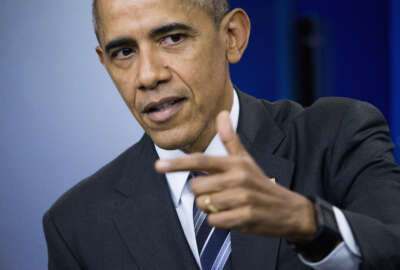The Veterans Affairs Department could see a 5 percent bump in funding for fiscal 2017, if Congress gives the department everything it’s asked for in the President’s new budget proposal.
The request totals $78.7 billion in discretionary funding, including $7.2 billion in discretionary funding for veterans’ care in the community programs under the Veterans Access, Choice and Accountability Act.
But spending on the Choice Program is unsustainable, VA executives said, and funding for the program will likely dry up by the end of 2017.
“The Choice Program got off to a rocky start,” David Shulkin, VA undersecretary for health, told the House Veterans Affairs Committee at the department’s budget hearing Feb. 10. “We have been working very hard to get veterans’ access to care through Choice, and we’ve seen the results of that. We’re seeing increased authorizations in significant numbers, and that’s leading us to the projections that we’ll be spending much more money using Choice funds to serve veterans.”
The Choice Program helps veterans look for care outside the VA when certain conditions are met. Congress created it in 2014, when it learned that some VA clinics cooked the books to hide delays in patient care.
The VA will continue to spend more on the Choice program because more veterans are tapping into the department’s health care options. The average veteran uses VA services for about 34 percent of his care, VA Secretary Bob McDonald told the committee. If that estimate rises just one percentage point, the VA will have to spend nearly $1.5 billion more.
“Veterans already have a choice,” he said. “Eighty-one percent of veterans have some form of Medicare, Medicaid [or] private health insurance. As we continue to improve the care from the VA and the care in the community, more veterans are going to choose to use our system because our co-pays are zero.”
But the committee is concerned that the VA’s Choice program and others haven’t done enough to improve appointment wait times, disability claims and appeals processes.
“Simply adding more capacity within VA and opening up additional outside care options doesn’t seem to have moved the needle much,” House VA Committee Chairman Rep. Jeff Miller (R-Fla.) said. “As the Secretary has told us, demand from existing and new users from the system has overwhelmed whatever new capacity is being created.”
The budget also includes more than 40 new legislative proposals that could give the VA secretary more flexibility to shift funding to areas of emerging need and address some of these challenges.
Among the proposals are a complete overhaul of the department’s appeals process and its community care program, compensation reforms for VA medical professionals and congressional authority to terminate leases on 18 under-utilized properties.
The President’s budget proposal includes an ambitious request for more funding in nearly every facet of VA operations.
The VA would receive $65 billion for medical care in 2017, a 6.3 percent increase in funding over enacted 2016 levels. Medical care programs would receive $66.4 billion in advance appropriations in 2018.
Its homelessness programs could receive $1.6 billion. More than $7 billion could go to VA mental health initiatives.
The department is also asking for $4.2 billion in IT spending, which VA Chief Information Officer LaVerne Council said will support its broader modernization goals.
“We have a large legacy issue that we need to address,” she said. “We are increasing our spending on security to $370 million, fully funding and fully resourcing our security capability. In addition, we’re putting in well over $50 million in creating a data management backbone that we didn’t have. We’ve added five new functions that will modernize the IT organization.”
A bigger VA workforce?
The size of the department’s workforce could increase by nearly 4.8 percent next year, according to the President’s budget request.
Many of those positions would come from the $2.6 million the department is requesting to improve its customer service and MyVA initiatives.
But applications for available positions within the VA are down nearly 75 percent, McDonald told the committee. He said the department has difficulty recruiting new talent — particularly skilled doctors, nurses and health care specialists — in light of recent public personnel scandals.
“They tell me people don’t want to join VA because it’s a maligned organization and everybody’s being fired,” he said. “And then I come and sit in front of you and you tell me nobody is being fired. And the truth, of course, is it’s somewhere in the middle.”
Ultimately, the committee didn’t reach any concrete decisions on the VA’s fiscal future. But any additional funding it does receive next year won’t come easily.
“This budget request is going to continue to receive every bit of scrutiny that I think the American taxpayers would expect us to give it,” Miller said.
Copyright
© 2024 Federal News Network. All rights reserved. This website is not intended for users located within the European Economic Area.
